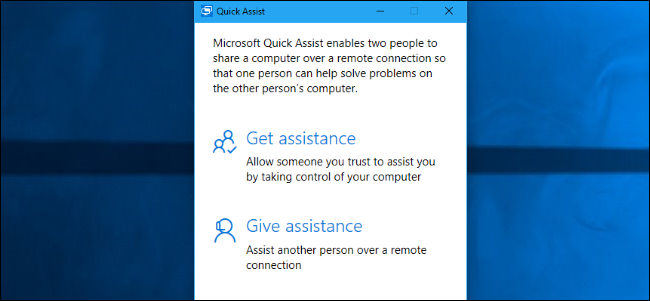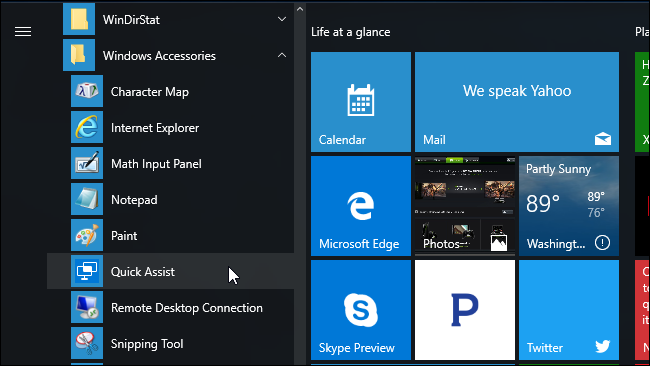
Windows offers a few built-in tools for performing remote assistance over the Internet. These tools allow you to take remote control of another person’s computer so you can help them troubleshoot it while you’re on the phone with them. They work similarly to Remote Desktop, but are available on all editions of Windows and are easy to set up.
If you’re both using Windows 10, you can use the built-in “Quick Assist” app to do this. If one of you is using Windows 7 or 8, you can use the older Windows Remote Assistance. Windows Remote Assistance is still included in Windows 10, just in case you need it.
Note that both features require the other person help initiate the connection. You can’t just remotely connect whenever you want—your family member or friend must be sitting at the PC to grant you access when you connect. You’ll need a different remote desktop solution if you want to connect whenever you like without needing the other person’s help.
| Kellogg’s® Pop-Tarts® | |
| |
| Check Out the Huge Variety of Pop-Tarts® on the Official Site! | |
| poptarts.com | |
| Learn more |
If You Both Have Windows 10: Use Quick Assist
Windows 10’s new “Quick Assist” feature is probably the easiest way to get up and running, so as long as you’re both using Windows 10 with the Anniversary Update installed, this is the option we recommend.
How to Start Helping Someone
First, open the Quick Assist application by searching your Start menu for “Quick Assist” and launching the Quick Assist shortcut. You can also navigate to Start > Windows Accessories > Quick Assist.

Assuming you want to help someone else by remotely accessing their computer, click “Give Assistance”.

You’ll then have to sign in with your Microsoft account. After you do, you’ll receive a security code that expires in ten minutes.
If your code expires, you can always just click “Give assistance” again to get a new one that will be valid for another ten minutes.

What the Other Person Needs to Do
You’ll then need to talk your friend or family member through opening the Quick Assist application on their PC. You can do this over email, text message, or on the phone.
They’ll need to open the Start menu, type “Quick Assist” into the search box, and launch the Quick Assist application that appears. Or, they can navigate to Start > Windows Accessories > Quick Assist.
They’ll then need to click “Get Assistance” in the Quick Assist window that appears.

At this point, they’ll be prompted to enter the security code you received. They must enter this code within ten minutes from the time you received it, or the code will expire.
The other person will then see a confirmation prompt, and they’ll have to agree to give you access to their PC.

You’re Now Connected
The connection will now be established. According to the Quick Assist dialog, it may take a few minutes before the devices connect, so you may have to be patient.
Once they do, you’ll see the other person’s desktop appear in a window on your computer. You’ll have full access to their entire computer as if you were sitting in front of it, so you can launch any programs or access any files they could. You’ll have all the privileges the computer’s owner has, so you won’t be restricted from changing any system settings. You can troubleshoot their computer, change settings, check for malware, install software, or do anything else you would do if you were sitting in front of their computer.
At the top right corner of the window, you’ll see icons that let you annotate (draw on the screen), change the size of the window, remotely restart…
The post How to Remotely Troubleshoot a Friend’s Windows PC Without Any Extra Software appeared first on FeedBox.